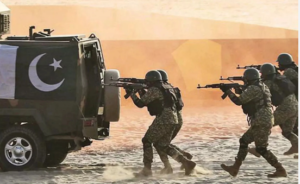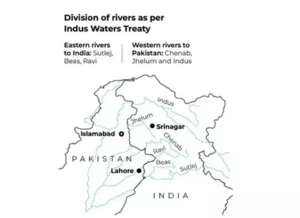Pakistan’s internal challenges, shifting dynamics.
Relevance
- GS Paper 2 India and its neighborhood- Relations.
- Bilateral, Regional, and Global Groupings and Agreements involving India and/or affecting India’s Interest.
- Tags #pakistan #terrorists #afghanistan #taliban #currentaffairs #UPSC.
Why in the news?
Recent instability in Pakistani civilian government and military interference has been an international concern as it brings instability in southern Asia.
Pakistan’s internal challenges and shifting geopolitical dynamics have been at the forefront of global discussions in recent years. Former Afghanistan President Ashraf Ghani’s persistent efforts to engage Pakistan in rectifying its strategic errors in Afghan policy met with unmet expectations. A critical meeting in May 2021 shed light on the complexities within Pakistan’s military chain of command, leading to a shift in regional dynamics following the unexpected triumph of the Taliban in Afghanistan.
Unmet Expectations and Complex Military Chain of Command
- The critical meeting in May 2021 involving Ashraf Ghani, Pakistan’s military leadership, and the UK’s Chief of Defence Staff highlighted a recurring issue—promises made by the Pakistani military were often diluted as they trickled down the chain of command.
- This dilution was attributed to a sympathetic stance of mid-level commanders towards the Taliban, exposing the intricacies of Pakistan’s military structure.
Shifting Mood Post-Taliban Victory
- Following the Taliban’s unexpected triumph in Afghanistan, Pakistan experienced a dramatic shift in sentiment.
- Initial jubilation among military and political leaders gave way to international condemnation of the Taliban’s actions.
- This change in global perception cast doubt on Pakistan’s claims of being a victim of terrorism and revealed skepticism within Pakistan regarding the military’s narratives.
Rise of the Tehrik-e Taliban Pakistan (TTP) and Radicalization
- The Taliban’s takeover of Kabul triggered a concerning shift within Pakistan.
- The TTP saw a surge in recruits, with nearly 40 allied groups joining its ranks, leading to increased insecurity and a rise in suicide attacks.
- Pakistan found itself grappling with a new phase of radicalization, exacerbated by the Taliban’s victory in Afghanistan.
Challenges in Combating the TTP
- Efforts to combat the TTP face formidable challenges.
- These include entrenched structural grievances, pervasive radicalization, and local sympathy for the TTP’s cause.
- The TTP’s resurgence, organizational sophistication, and ability to exploit grievances make it a potent threat to Pakistan’s security.
A Shift in Strategic Paradigm
- Pakistan’s historical pursuit of strategic depth in Afghanistan has undergone a significant transformation.
- The Afghan Taliban now have a strategic foothold within Pakistan, thanks to support from entities like the TTP and other radical groups.
- This shift presents complex implications for Pakistan’s domestic security and its relationship with the Afghan Taliban.
Why the Afghan Taliban Cannot Act Against the TTP
- Concerns about internal division, the potential loss of fighters to the TTP or other extremist factions, the risk of losing secure havens along the Durand Line, and the TTP’s strategic capabilities that could challenge the Afghan Taliban’s authority.
The Urgent Need for Pakistan to Introspect
- Pakistan must urgently reevaluate its policy of cultivating radical Islamist groups for foreign policy gains.
- While many nations have abandoned such practices, Pakistan’s persistence casts a shadow over its trajectory.
- A shift towards prioritizing the welfare of its populace and regional peace is imperative.
Pakistan stands at a crossroads, facing internal challenges and evolving regional dynamics. A re-evaluation of its policies, a redefined role for its military, and cooperation with movements like the Pashtun Tahafuz Movement (PTM) are essential steps toward a stable and prosperous future. As the cost of recent policies becomes increasingly evident, Pakistan must choose a new path to secure its place in the global community and foster positive relationships with its neighbors, particularly India and Afghanistan. The well-being of its citizenry depends on this critical decision.
|
This impacts India-Pakistan relations in several ways 1. Regional Complexity: Pakistan’s internal challenges, including the TTP’s growth, create regional complexities. India shares a border with Pakistan, making it concerned about potential cross-border terrorism and instability. 2. Distrust: Issues like the complexity within Pakistan’s military hierarchy and doubts about its narratives contribute to existing distrust between India and Pakistan. This lack of trust has long hindered bilateral relations. 3. Security Concerns: Radicalized groups in Pakistan, like the TTP, pose security challenges for both Pakistan and neighboring countries, such as India. India has faced terror attacks linked to Pakistan-based militant groups in the past. 4. Shifting Strategy: Pakistan’s changing strategic approach, including the Afghan Taliban’s presence in Pakistan, could affect India-Pakistan relations. Instability within Pakistan may impact its relationship with India. 5. Emphasis on Regional Peace: India consistently calls for regional stability and cooperation. The article highlights the urgent need for Pakistan to prioritize regional peace, which could benefit India by creating a stable neighborhood. 6. Diplomatic Opportunities: While challenges exist, the article suggests opportunities for diplomatic engagement to address common concerns and promote regional stability, including improved relations with India. In summary, Pakistan’s internal challenges and shifting dynamics indirectly impact India-Pakistan relations. India remains watchful of security issues and the need for regional stability while remaining open to diplomatic initiatives that could enhance relations. |
| Year | Event |
| 1947 | British partitioned Indian subcontinent into secular India and Muslim Pakistan on August 15 and 14, respectively. Partition led to massive migrations, rioting, and bloodshed. |
| 1947-48 | First war between India and Pakistan over Jammu and Kashmir. War ended with UN-declared cease-fire and Karachi Agreement. |
| 1952/1954 | Delhi Agreement granted special status to Jammu and Kashmir within Indian Constitution. State ratified accession to India in 1954. |
| 1965 | Second war over Jammu and Kashmir. War ended with Tashkent Declaration, facilitated by Soviet Union and United States. |
| 1971 | Third war over East Pakistan (now Bangladesh). Bangladesh emerged as a new nation. |
| 1972 | Simla Agreement signed, guiding future India-Pakistan ties. Ceasefire line designated as new “Line-of-Control (LoC).” |
| 1992 | Joint Declaration Prohibiting Use of Chemical Weapons signed. Both nations ratified Chemical Weapons Convention (CWC). |
| 1999 | Vajpayee visited Pakistan, Lahore Declaration signed. Kargil war followed. |
| 2001 | Armed attack on Indian parliament. LeT and JeM responsible. |
| 2008 | Terrorist attacks in Mumbai. Attackers claimed LeT affiliation. |
| 2009 | Mumbai attacks plotted in Pakistan, denied official involvement. |
| 2013 | India-Pakistan PMs met, halted hostilities in Jammu and Kashmir. |
| 2016 | Pathankot airbase attack by JeM. Uri attack, surgical strikes by India. |
| 2019 | CRPF attack by Jaish-e-Mohammed, retaliatory airstrikes. Revocation of Article 370 in Jammu and Kashmir. |
|
Relations between India and Pakistan Kashmir Issue · Pakistan’s Kashmir policy has been reactive, responding to India’s moves in the region. · Indian government’s efforts to integrate Jammu and Kashmir, including revoking Articles 370 and 35A. · Granting of Union Territory status to Jammu and Kashmir opposed by Pakistan, leading to tensions. Indus Waters Treaty · Established on September 19, 1960, with World Bank mediation. · India controls the Ravi, Beas, and Sutlej rivers; Pakistan manages the Indus, Jhelum, and Chenab. India-Pakistan Trade Relations · Bilateral trade volume remains limited despite their economic sizes. · In 2018-19, India’s exports to Pakistan totalled $2.06 billion, while imports stood at $495 million. · Trade suspension following the Pulwama terror attack in 2019. Kartarpur Corridor · Connects the Sikh shrines of Dera Baba Nanak in India and Gurdwara Darbar Sahib in Kartarpur, Pakistan. · Inaugurated on November 9, 2019, offering Indian pilgrims visa-free access to Gurdwara Darbar Sahib. |
Sources: The Hindu
Mains Question
How did the mood in Pakistan shift following the unexpected victory of the Taliban in Afghanistan, and what were the consequences of this shift? What challenges has Pakistan faced with the rise of the Tehrik-e Taliban Pakistan (TTP) and the surge in radicalization? 250 words






